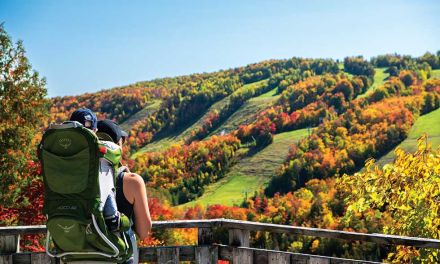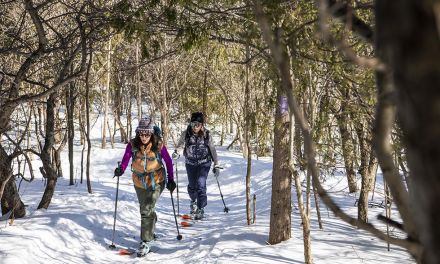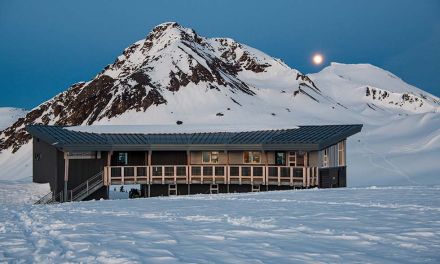Ice & Easy
Words and photography by Will Tam
As temperatures drop, climbers trade shoes for crampons and chalk bags for ice axes. Curious about ice climbing? Dive into the frozen world of Escarpment waterfalls this winter–discover the thrill and learn how to get started!
Ice climbing originated in the early 19th century as an offshoot of mountaineering. High in the snow-covered mountains, climbers often navigated glaciers and crevasses using straight-shafted ice axes and crampons with spikes pointing downwards. These tools allowed climbers to traverse low-angle ice and snow safely. As technology advanced, so too did the tools used by climbers. Curved ice axes, now known as ice tools, allowed climbers to swing the axes into the ice more easily and without bashing their knuckles. Front-pointed crampons allow climbers to kick into the ice so that the climber can stand and balance on more vertical ice terrain. Ice climbing has evolved beyond scaling vertical frozen waterfalls to include climbing bare rock cliffs to reach overhanging ice daggers.
If you’ve tried indoor gym climbing or rock climbing outdoors, then you already possess the basic skillset. If you’re new to climbing, don’t worry; it’s not as difficult as it appears. Physically, ice climbing movements are repetitive: kick, kick, and swing, swing. With each kick and swing higher than the last, you ascend the ice. With practice, you will find that you don’t need a lot of strength to swing an ice tool into the ice for a secure “stick”. Accurately swinging your sharp ice tools to the same point of contact will break off enough ice for the teeth of the ice tools to catch. Breaking off too much ice leaves you with nothing to hold onto.
Managing the “pump” in your forearms is crucial. Lactic acid buildup from overworked muscles can make your arms feel stiff and heavy, especially when they are constantly raised above your head. By moving at a moderate pace and lowering your arms to shake out the lactic acid buildup, you can avoid the dreaded “screaming barfies”. This sensation occurs when cold and pumped hands and forearms experience a sudden rush of blood, causing a pins-and-needles feeling that might make you scream and occasionally feel nauseous. Don’t worry, it’s not as bad as it sounds!
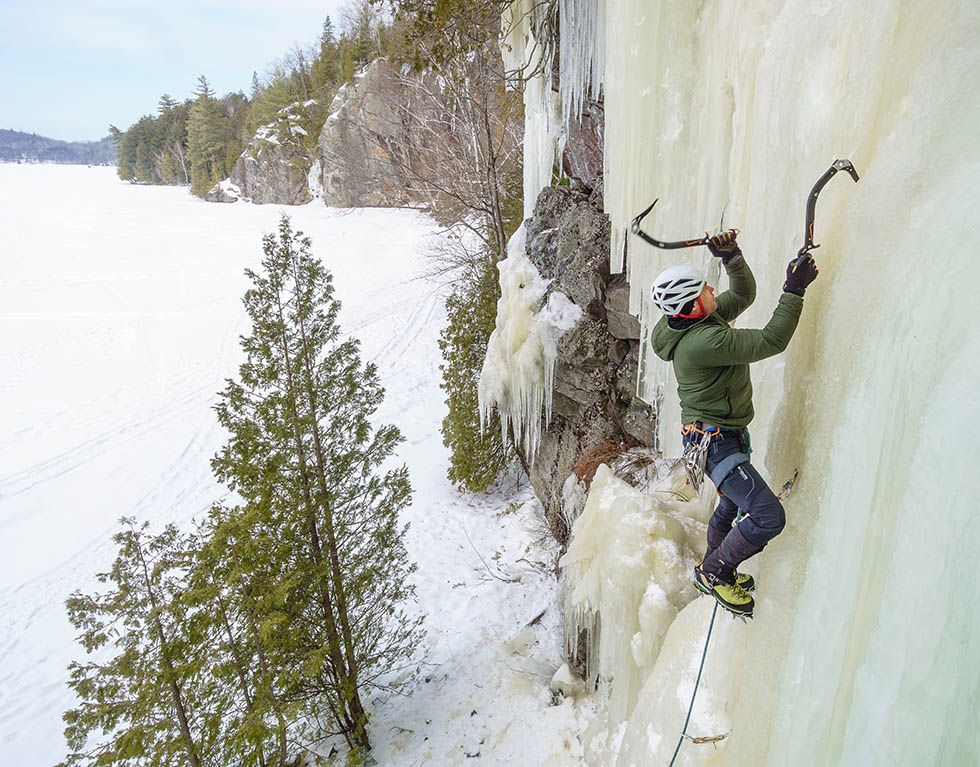
Derek Lanthier leading up Onyx (WI3) at Hidden Gems near Bancroft
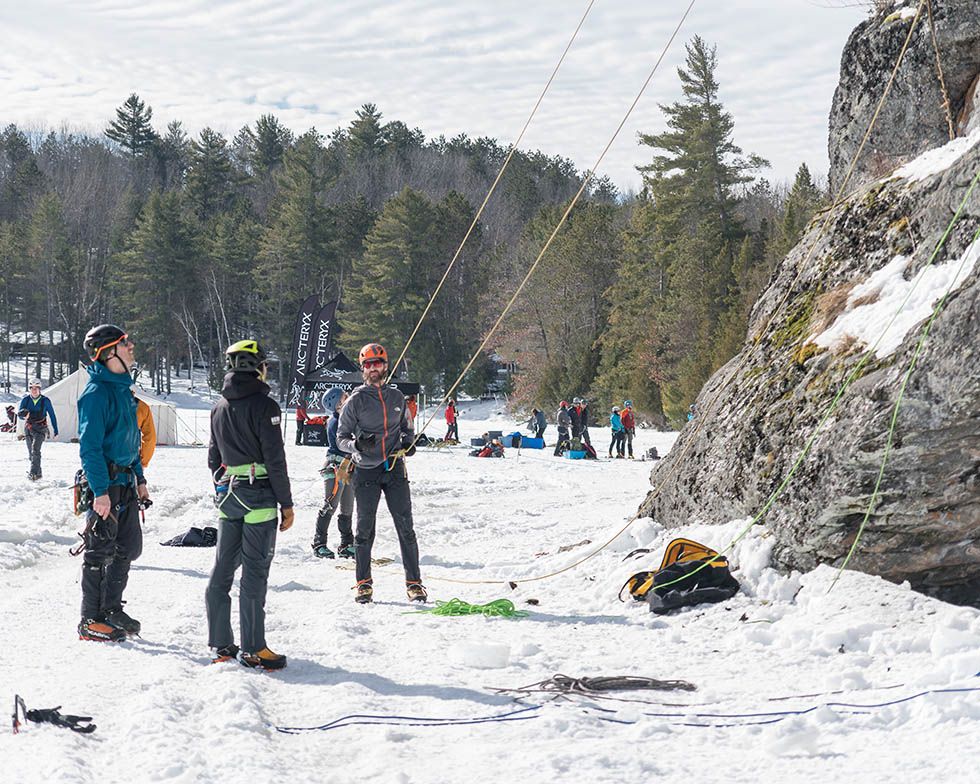
Physically, ice climbing movements are repetitive: kick, kick, and swing, swing. With each kick and swing higher than the last, you ascend the ice.
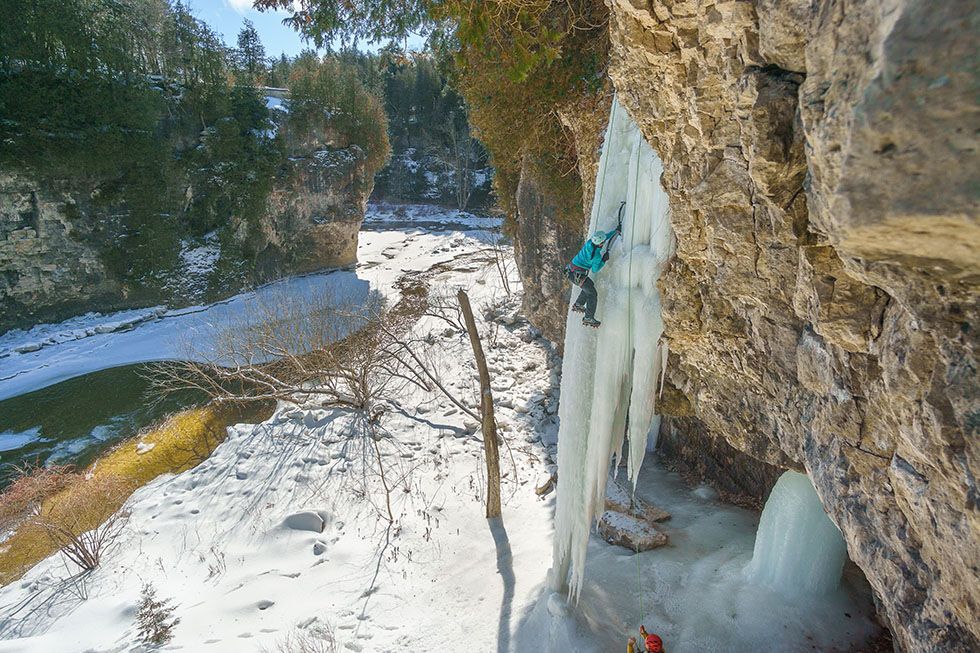
Monika Widjaja-Tam top-roping one of the main ice flows at Elora Gorge
Finally, the dark arts of ice climbing is known as “drytooling” where the climber only climbs a rock face with crampons and ice tools. Drytooling and mixed climbing routes typically have bolts in the rock for protection. All forms of ice climbing can be done on top rope, ensuring a safe experience for everyone.
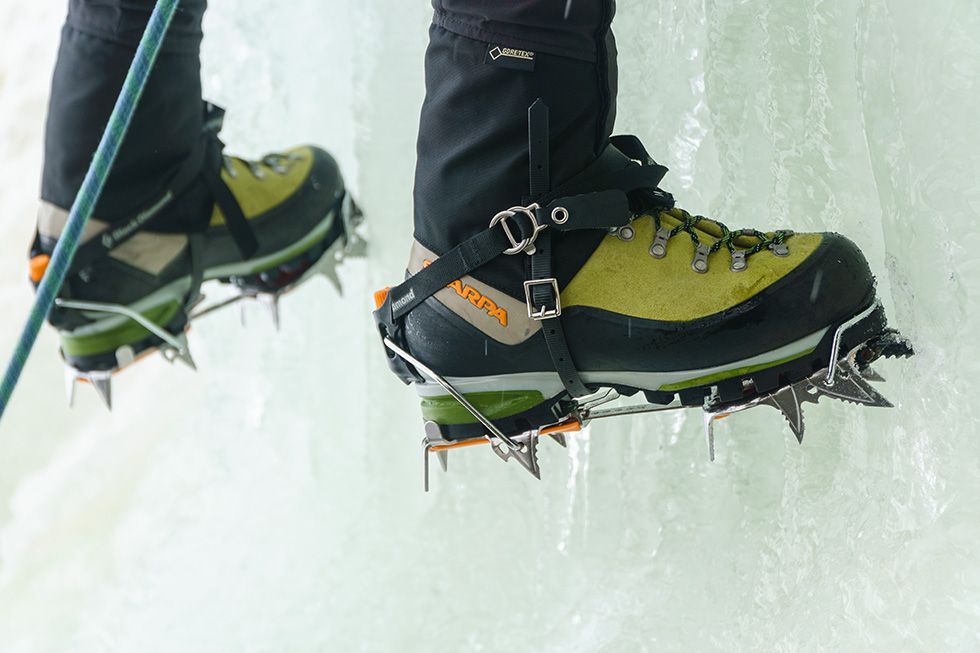

bail and toe welt to attach crampons; however, ski boots and mountaineering boots also work, although they are bulkier and heavier. A climbing guide can provide you with all the necessary equipment for ice climbing. Warm clothes and a thermos filled with hot beverages are also helpful! By adding or removing layers of clothing, you can better regulate your temperature while outside in the cold. You can certainly work up a sweat while ice climbing, so a base layer and a thin mid-layer might be all you need; sometimes, a waterproof shell jacket is useful on snowy or wet days. Snow or rain pants and gaiters will keep your lower half warm and dry. A puffy jacket and a warm beverage will keep you toasty while you are belaying or hanging out between climbs.
So, where can you go ice climbing in Southern Ontario? Elora Gorge is a popular location on the Niagara Escarpment and not far from major hubs like Toronto. What makes Elora Gorge unique is its easy access to the top of the cliff, and the climbing area offers routes in all disciplines of ice climbing. In cottage country regions such as Algonquin, Muskoka, and Bancroft, you can find ice climbs along the cliffs of frozen lakes; some may require crossing frozen lakes to reach the climbing areas. Local guiding companies in each region provide half and full-day outings, offering beginner and advanced lessons.
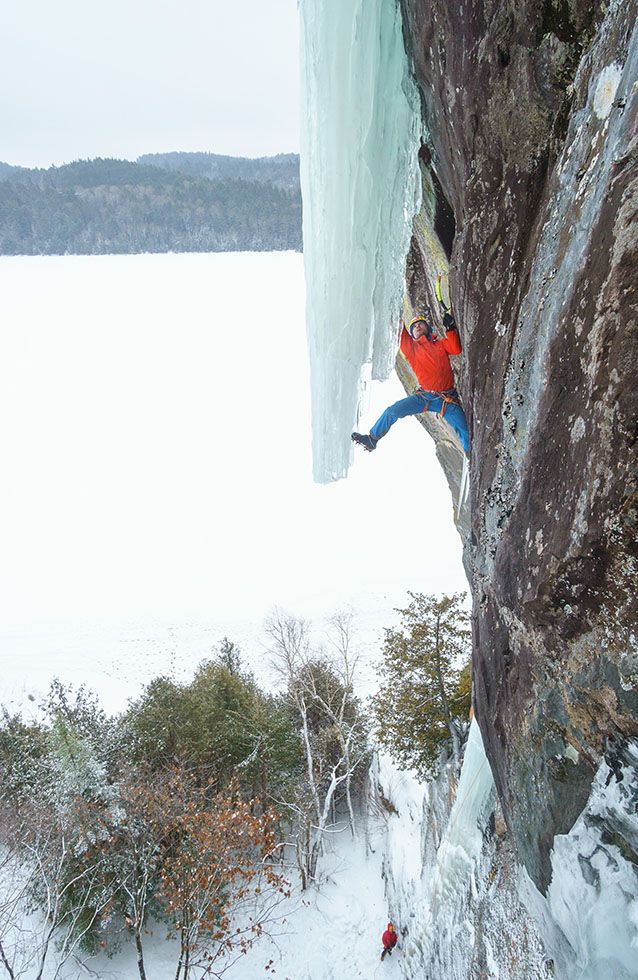
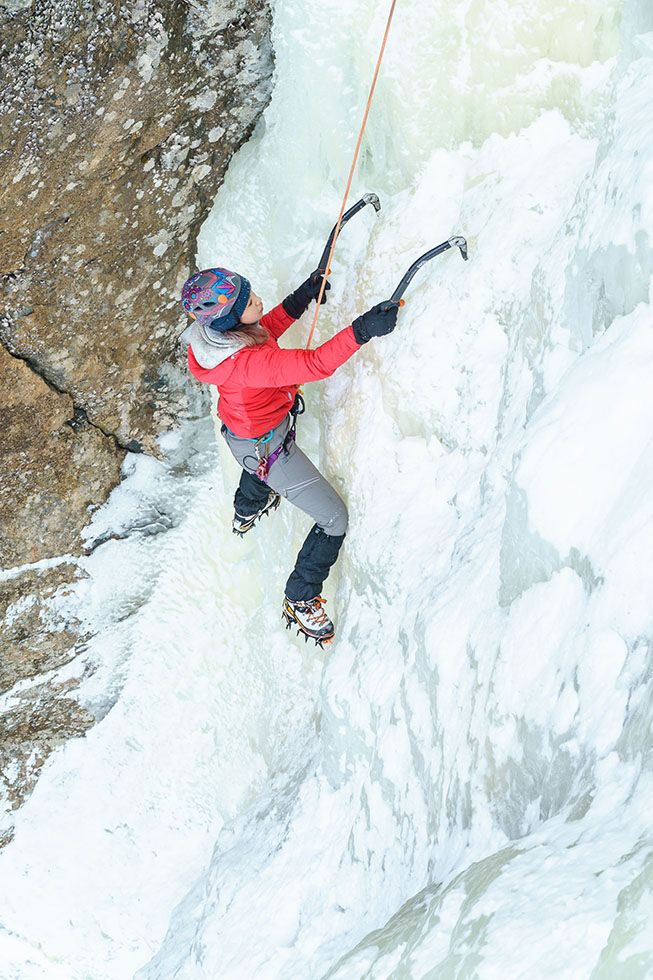
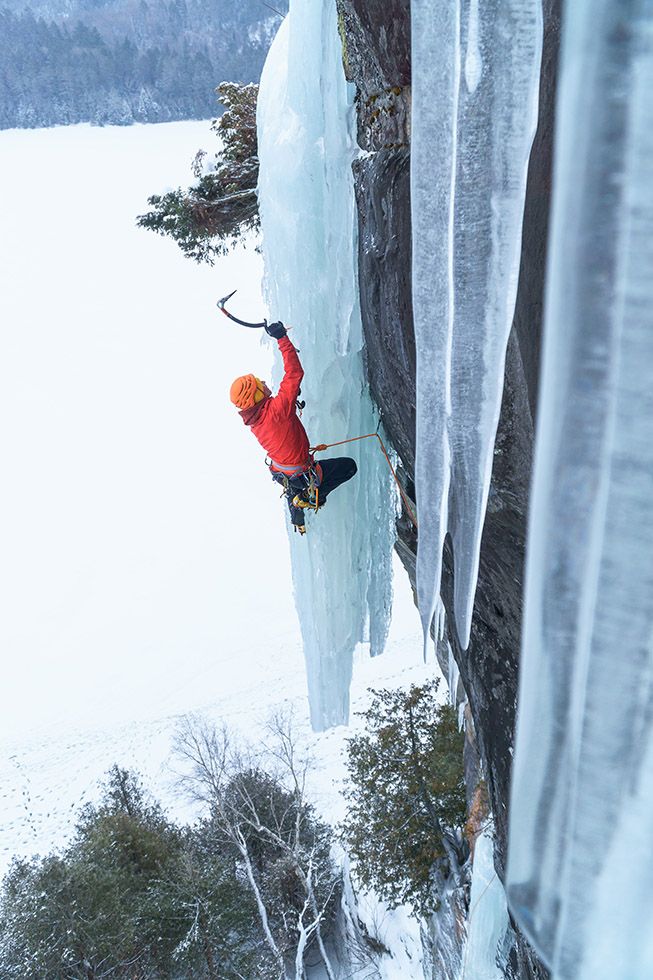
This winter, discover the vertical world of ice climbing! Southern Ontario offers numerous picturesque venues for ice climbing, accompanied by a welcoming community. Consider hiring a local guide to safely introduce you to the sport and, most importantly, to have fun. Who knows, you might get hooked! Just be sure to avoid the dreaded screaming barfies!
Disclaimer: Please note that this article does not serve as an official guide or provide instructions on ice climbing. Ice climbing is inherently risky because ice conditions can change with temperature fluctuations, leading to melting or breaking off. Climbing is undertaken at your own risk. To ensure a safe and enjoyable experience, it’s crucial to learn how to assess ice conditions, take necessary safety precautions, and consider hiring a knowledgeable guide. E
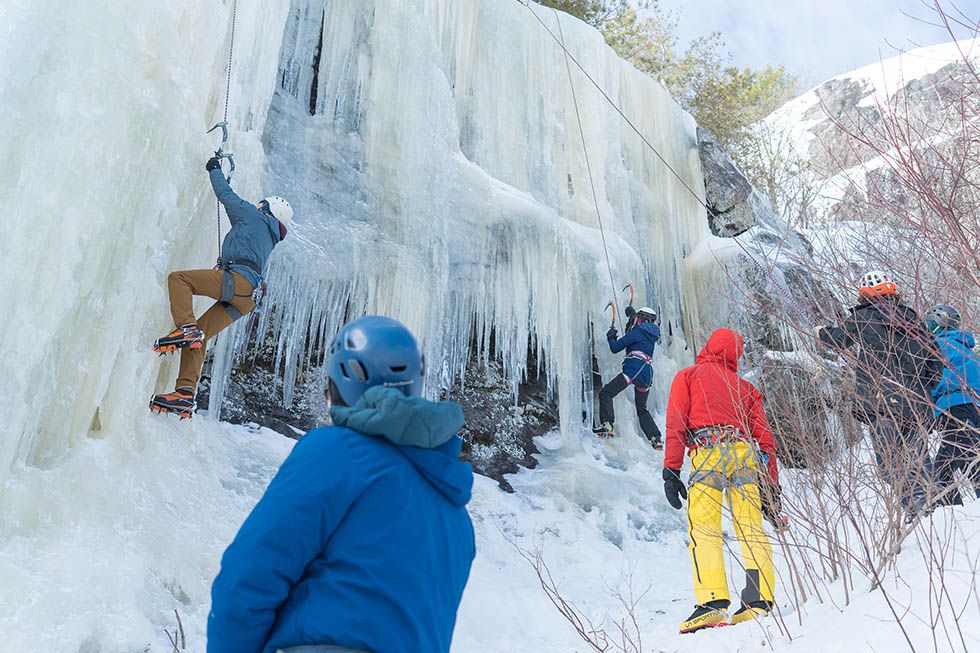
The annual Southern Ontario Ice Climbing Festival in Maynooth, is an excellent opportunity for first-timers to learn ice climbing from professional climbing guides


